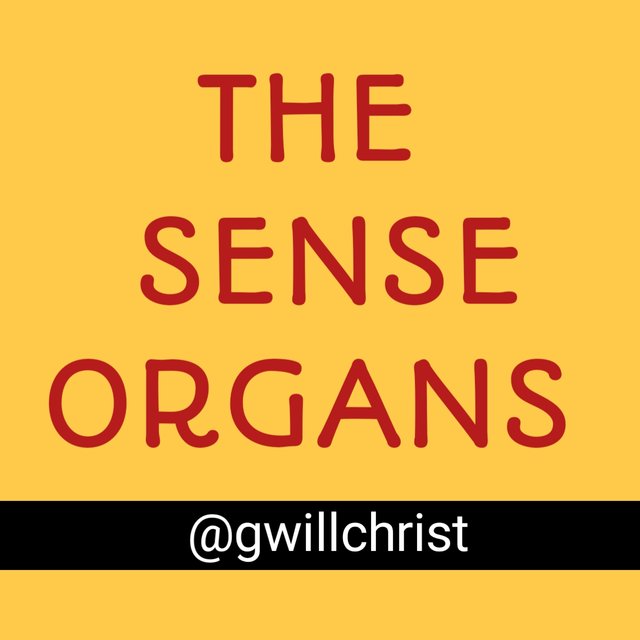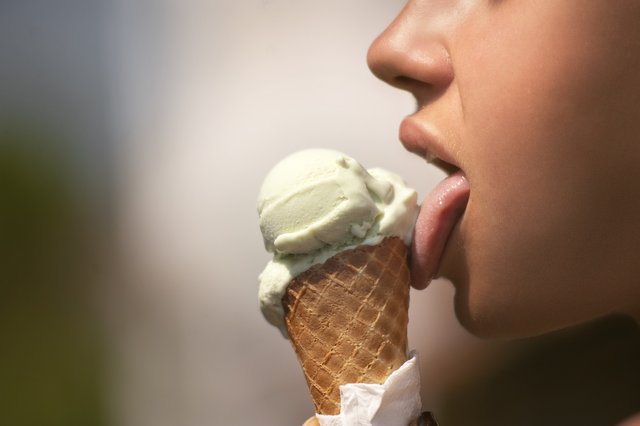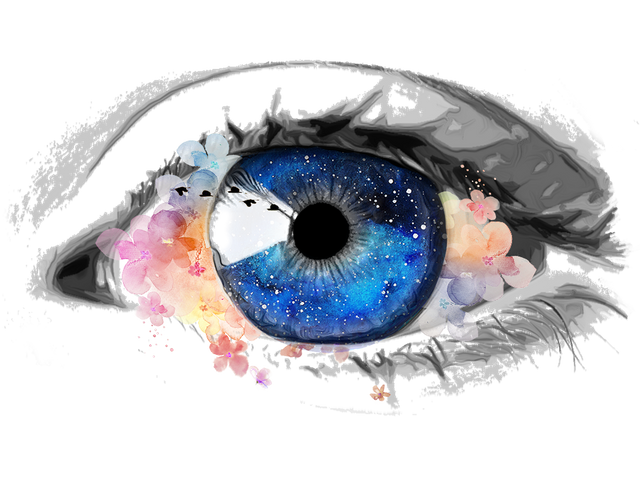MY LIFESTYLE CONTENT CHOICES| TUTORIAL|SENSE ORGANS (part 1) | by @gwillchrist
Happy new week everyone,
I celebrate everyone in this community @steem4nigeria.
I so very much thank and appreciate @ngoenyi for making my lifestyle content choices to be a reality and a blessing to newbies.
I will be giving us a tutorial by sharing knowledge with us about The Sense Organs (Part 1)
Let's go!
SENSE ORGANS |
|---|
The human body has five sense organs and all perceiving various sensations. These sense organs have sensory cells which enable them to receive a particular stimulus and, at the same time, convert the stimuli into impulses.
Mammalian nose has a mucous membrane that has a tiny nerve ending that picks odours and sends the impulse to the olfactory lobe of the brain.
According to researches made, there are thousand of odour – producing chemicals in the nose, each with its own chemoreceptor. Some insects (example butterfly) have chemoreceptors on their antennae for sensing their environment. And some animals have their smell chemoreceptors located on their skin or other parts of their bodies.
ORGAN OF TASTE |
|---|
The tongue is the organ of taste. There are groups of taste receptors on the tongue. These groups of taste receptors are found in structures called taste buds. The tongue can be divided into regions each corresponding to a different taste sensation. There are only about four primary taste sensations; namely sweet, sour, salty and bitter.
Tip of tongue is sensitive to sweet and salt flavours.
Side of the tongue is sensitive to sour flavours.
Back of the tongue is sensitive to bitter flavours.
When the sensory cells are stimulated by substances in a solution, it transmits impulses to the brain which leads to taste sensation.
ORGAN OF SIGHT |
|---|
source
The eye is the sense organ of sight. The eye is located in a bony socket in the skull which is connected to the brain by the optic nerve. Each eyeball is attached to the eye sockets by six sets of muscles. These muscles enable the eye to move in many directions.
FUNCTIONS OF PARTS OF THE EYE |
|---|
- Sclerotic layer: It is the outermost part of the eye. It is tough and non-elastic fibrous connective tissue. It forms the white of the eye, maintains the shape of the eye and also protects the inner parts.
Choroids: This is the the second layer with black pigment and it is and rich in blood food and oxygen to the adjacent part of the eye.
Retina:This is the innermost layer containing light-sensitive nerve cells the rods and cones
. Rods are sensitive to weak light while vines are sensitive to high light intensity and coloured light. Both send impulse along the topic nerve to the brain where the sensation of light is experienced.
Fovea centralis (yellow spot): This is a small depression and the most sensitive part of the retina. It is where the light rays entering the eye are brought to a focus. It is used for observing sharp images.
Optic nerve: It penetrates to the eye through a spot called blind spot. This region is insensitive area of the cerebral cortex of the brain. It presides the shape of the lens.
Ciliary muscles: These are muscles attached to the outer edge of the suspensory ligaments. They help in alteration of the focal length of the lens thus bringing about proper accommodation.
Suspensory ligament: Form the ciliary body, it holds the lens in place.
Cornea: Thick transparent tissue, which is the continuation of the sclera in front of the eye.
Iris: They are free edges, continuation of the choroids in front, and forming a partition between the anterior and posterior chambers of the eye. It regulates the amount of light entering the eyes. It is also responsible for the colour of the eye because of the pigmentation in different individuals.
Pupil: It is surrounded by iris muscles. It is the opening controls in the the iris amount throughof light which which light enters enters and the eyeball focuses by by it’s the contraction lens onto retina. And expansion It action.
Lens: it is a transparent, biconvex crystalline structure makes which fine is adjustment held in placeto by the suspensory ligament. It refracts light rays and focus the image of an object on the retina.
EYE DEFECTS AND THEIR CORRECTION |
|---|
Short-sightedness(myopia): This is an eye defect in which distant objects are not seen clearly, only near objects are seen clearly. This occur because the eye lens is slightly elongated and so image of a distant object is focused on the retina.
Correction: Use of suitable concave (diverging) spectacle lens which lengthens the focal distance as well as cause the light rays to spread slightly before they enter the eye, thus the image is focused on the retina.
Long-sightedness (hypermetropia): This is an eye defect in which near objects are not seen clearly. Only distant objects are seen clearly. This defect may be due to the eye ball being shorter than normal or the lens and ciliary muscle losing their elasticity with age. Light rays from near objects are brought to focus behind the retina.
Correction: Use of suitable convex (converging) spectacle lens which will shorten the focal length as well as converge or bend light rays entering the eye from near object to focus on the retina.
Long-sightedness is corrected by use of convex lenses.
Astigmatism: This is an eye defect that occurs when the curvature of the cornea is not uniform, object is brought to a different focus in a different plane. This results to blurred or distorted vision. Correction is by use of cylindrical lens.
Presbyopia (Lack of accommodation) This is inability to see near and distant objects clearly, caused by weakening of ciliary muscles and inelasticity of the lens.
Correction: By wearing convex lenses or bifocal lenses i.e containing both convex and concave lenses.
CARE OF THE EYES |
|---|
Do not rub eyes with dirty fingers.
Do not read in direct sunlight or dim light conditions.
Do no directly observe an eclipse of the sun.
Have thorough eye examination by a medical doctor (ophthalmologist).
The eyes should be rested as much as possible by relaxing the eye muscles and letting them focus on distance objects.
Do not rub the eyes with dirty handkerchief.
Anticipate part two of this Tutorial.
#mycontentchoices8 #creativewriting #steemexclusive #club75 #nigeria #learnwithsteem



Wow thanks friend I have learned alot from your tutorial on sense organ and it's function and also on how we can care for our eye. Steem on💃
You're welcome 😊
Thank you for reading through my post.
I appreciate 🙏
Hmm imagine a life with our sense organs like the eyes? The eyes is so powerful and so important in the human life. Life won't really make sense with the eyes.
I
Thank you for teaching me the various to care for my eyes